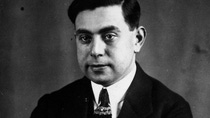Who we are
Memorial book
Here, BASF commemorates the employees of the I.G. Farben plants in Ludwigshafen and Oppau – today the BASF site in Ludwigshafen – who were victims of racist, ideologically motivated ostracization and persecution under the Nazi regime.
Also included are those who, due to their status - for example as “half-Jews” [Nazi term] - came under the scrutiny of those in power, but were able to remain at the I.G. Farben plants in Ludwigshafen or Oppau. The memorial book is not yet complete, since BASF Corporate History team’s search for traces continues. It thus reflects what we know at the start of 2025.
The following overview includes lifetime dates, information on employment at BASF or I.G. Farben, and what we know about why they were subjected to persecution and discrimination. Where it has been possible to reconstruct the facts, we have also briefly documented what happened to the people after they were forced to leave the company. Following the list of the individuals concerned, you will also find an assessment of the challenges involved in the research. Eight individuals, who suffered a diverse range of fates, are also explored in greater detail. Links provide access to brief portraits of them.
We do not know how many names of persecuted employees are still missing from this memorial book. In most of the cases that we have been able to reconstruct, the individuals affected were highly skilled “Jewish” employees for whom personnel files are available. This includes both people who identified as being of Jewish descent or of the Jewish faith and those whom the Nazi regime classified as Jewish. The personnel files contain varying amounts of information but, in all cases, they include significantly more than the basic data typically recorded on personnel cards. In the case of unskilled workers, however, these cards constitute the only available source of information, since personnel files were not created for this group. For the same reason, there are also no photographs of unskilled workers.
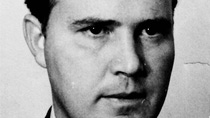
Dr. Michael Aschenbrenner
Lifetime: 1900-1977
Profession: Chemist
Employment at the plant: 1927-1962
Grounds for discrimination/persecution: "mixed marriage” with a Jewish woman [Nazi term]
Fate: Remaining until retirement at the plant
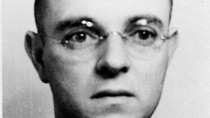
Dr. Friedrich Bergmann
Lifetime: 1899-1989
Profession: Physicist
Employment at the plant: 1926-1964
Grounds for discrimination/persecution: "Part-Jew" ("Mischling") [Nazi term]
Fate: Remaining until retirement at the plant
Heinrich Birkenfelder
Lifetime: 1908-1986
Employed as: Unskilled stoker
Employment at the plant: 1939-1940
Grounds for discrimination/persecution: "Zigeuner-Mischling" ("gypsy" of mixed blood) [Nazi term]
Fate: Deportation; forced labor; survived
Dr. Agate Carst
Lifetime: 1896-1975
Profession: Physicist
Employment at the plant: 1927-1936
Grounds for discrimination/persecution: "Jewish descent" [self-declaration]
Fate: Self-resignation; emigration
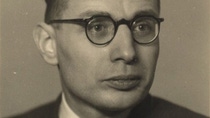
Dr. Ernst Donath
Lifetime: 1902-1983
Profession: Chemist
Employment at the plant: 1926-1946
Grounds for discrimination/persecution: "Part-Jew" ("Mischling") [Nazi term]
Fate: Remaining at the plant until 1946; thereafter voluntary resignation and emigration
Hedwig Ebel
Lifetime: 1904-1974
Employed as: Unskilled worker
Employment at the plant: 1940
Grounds for discrimination/persecution: Jewish [by faith]
Fate: Termination of employment; survived

Dr. Ing. Ernst Erich Escales
Lifetime: 1907-1979
Profession: Chemist
Employment at the plant: 1935-1939
Gounds for discrimination/persecution: "Half-Jew" [Nazi term]
Fate: Self-resignation; detention; deportation to Buchenwald concentration camp; survived
Gov. Master Builder Max Falkenberg
Lifetime: 1887-1965
Profession: Architect
Employment at the plant: 1921-1938; 1946-1952
Gounds for discrimination/persecution: Jewish [by faith]
Fate: Deportation to Dachau concentration camp; termination of employment; re-employment 1946
Dr. Walter Frankenburg
Lifetime: 1893-1957
Profession: Chemist
Employment at the plant: 1923-1938
Gounds for discrimination/persecution: Jewish [as per Nazi definition]
Fate: Termination of employment; emigration
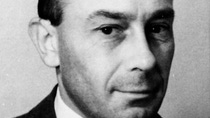
Dr. Fritz Fried
Lifetime: 1896-1987
Profession: Chemist
Employment at the plant: 1927-1961
Grounds for discrimination/persecution: "Part-Jew" ("Mischling") [Nazi term]
Fate: Remaining until retirement at the plant
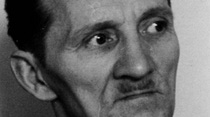
Wilhelm Gebauer
Lifetime: 1889-1942
Employed as: Telephone operator
Employment at the plant: 1940-1942
Grounds for discrimination/persecution: "Mixed marriage" with a Jewish woman [Nazi term]
Fate: Natural death

Philipp Glaser
Lifetime: 1900 - ? [year of death unknown]
Profession: Locksmith
Employment at the plant: 1915-1965
Grounds for discrimination/persecution: "Mixed marriage" with a Jewish woman [Nazi term]
Fate: Compulsury service ("Organisation Todt"); survived
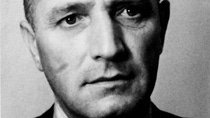
Dr. Max Herbst
Lifetime: 1892-1959
Profession: Chemist
Employment at the plant: 1928-1957
Grounds for discrimination/persecution: "Mixed marriage" with a Jewish woman [Nazi term]
Fate: Remaining until retirement at the plant
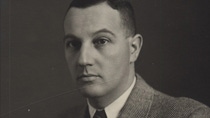
Dr. Kurt Herrdegen
Lifetime: 1890-1988
Profession: Chemist; operations manager (since 1934)
Employment at the plant: 1915-1955
Grounds for discrimination/persecution: "Part-Jew" ("Mischling") [Nazi term]
Fate: Remaining until retirement at the plant
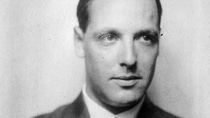.jpg)
Dr. Karl Heymann
Lifetime: 1904 - ? [year of death unknwon]
Profession: Chemist
Employment at the plant: 1933-1936
Grounds for discrimination/persecution: Jewish [as per Nazi definition]
Fate: Self-resignation; emigration
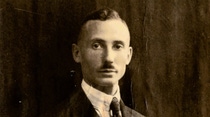
Master Builder Horst Jacoby
Lifetime: 1891-1978
Profession: Architect
Employment at the plant: 1920-1938
Grounds for discrimination/persecution: Jewish [as per Nazi definiition]
Fate: Forced retirement; survived
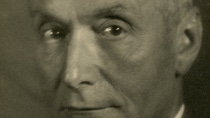
Dr. Max Kunz
Lifetiem: 1876-1960
Profession: Chemist; Head of the Main Laboratory (1932-1938)
Employment at the plant: 1901-1938
Grounds for discrimination/persecution: "Mixed marriage" with a Jewish woman [Nazi term]
Fate: Remaining until retirement at the plant

Dr. Ing. Hermann Leuchs
Lifetime: 1894-1978
Profession: Chemist
Employment at the plant: 1927-1959
Grounds for discrimination/persecution: "Mixed marriage" with a Jewish woman [Nazi term]
Fate: Remaining until retirement at the plant
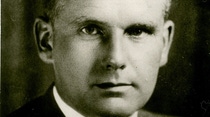_L%2013747-5_36%20Dr.%20Hermann%20F.%20Mark_ca.%201930.jpg)
Prof. Dr. Herman F. Mark
Lifetime: 1895-1992
Profession: Chemist
Employment at the plant: 1927-1932
Grounds for discrimination/persecution: "Half-Jew" [Nazi term]
Fate: Self-resignation; detention; emigration
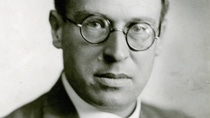
Prof. Dr. Kurt Hans Meyer
Lifetime: 1883-1952
Profession: Chemist; Head of the Main Laboratory (1921-1931); I.G. Farben Management Board member (1925-1932)
Employment at th plant: 1921-1932
Grounds for discrimination/persecution: Jewish [as per Nazi definition]
Fate: Self-Resignation; emigration
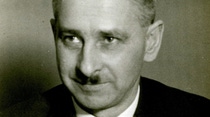
Dr. Paul Nawiasky
Lifetime: 1883-1977
Profession: Chemist
Employment at the plant: 1907-1936
Grounds for discrimination/persecution: "Non-Aryan" [self-declaration; Nazi term]
Fate: Self-resignation; emigration
Dipl. Ing. Hans Schellenberg
Lifetime: 1891-1969
Profession: Civil engineer
Employment at the plant: 1926-1956
Grounds for discrimination/persecution: "Half-Jew" [Nazi term]
Fate: Compulsory service ("Organisation Todt"); survived
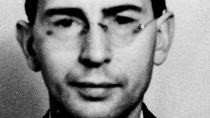_undatiert.jpg)
Dr. Karl Otto Schmitt
Lifetime: 1900-1976
Profession: Chemist
Employment at the plant: 1925-1965
Grounds for discrimination/persecution: "Mixed marriage" with a Jewish woman [Nazi term]
Fate: Remaining until retirement at the plant
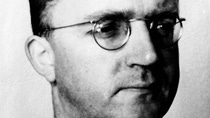
Dr. Curt Schuster
Lifetime: 1892-1990
Profession: Chemist
Employment at the plant: 1922-1943; 1945-1957
Grounds for discrimination/persecution: "Mixed marriage" with a Jewish woman [Nazi term] / married to Dr. Marie Regina Schuster
Fate: Detention; termination of employment; conviction for "radio crimes"; forced labor; re-employment 1945
Dr. Marie Regina Schuster
Lifetime: 1890-1944
Profession: Chemist
Employment at the plant: 1920-1925
Grounds for discrimination/persecution: Jewish [as per Nazi definition] / married to Dr. Curt Schuster
Fate: Self-resignation; detention; deportation; murdered in Auschwitz concentration camp
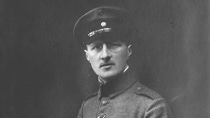.jpg)
Albert Siebert
Lifetime: 1891-1974
Profession: Commercial employee
Employment at the plant: 1918-1931; 1936-1945
Grounds for discrimination/persecution: "Mixed marriage" with a Jewish woman [Nazi term]
Fate: Compulsury service ("Organisation Todt"); survived
Dr. Berthold Stein
Lifetime: 1894-1956
Profession: Chemist
Employment at the plant: 1929-1938
Grounds for discrimination/persecution: Jewish [by faith]
Fate: Termination of employment; emigration
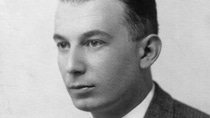_600dpi.jpg)
Dr. Emery I. Valko
Lifetime: 1902-1975
Profession: Chemist
Employment at the plant: 1929-1938
Grounds for discrimination/persecution: Jewish [as per Nazi definition]
Fate: Termination of employment; emigration
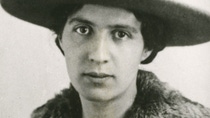_L%2021599-5_28%20Dr.%20Lili%20Wachenheim_ca.%201920.jpg)
Dr. Lili Wachenheim
Lifetime: 1893-1989
Profession: Chemist
Employment at the plant: 1918
Grounds for discrimination/persecution: Jewish [as per Nazi definition]
Fate: Self-resignation; emigration

Georg Wald
Lifetime: 1905 - ? [year of death unknwon]
Profession: Factory worker
Employment at the plant: 1936-1943
Gounds for discrimination/persecution: "Mixed marriage" with a Jewish woman [Nazi term]
Fate: Sick leave
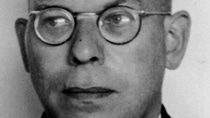_600dpi.jpg)
Dr. Hans Joachim Waldmann
Lifetime: 1901 - ? [year of death unknown]
Profession: Chemist
Employment at the plant: 1939-1966
Grounds for discrimination/persecution: Jewish [as per Nazi definition]
Fate: Remaining until retirement at the plant

Dr. Wilhelm Werniger
Lifetime: 1912 - ? [year of death unknown]
Profession: Chemist
Employment at the plant: 1938-1942
Grounds for discrimination/persecution: "Part-Jew" ("Mischling") [Nazi term]
Fate: Transfers to another I.G. Farben plant (Wolfen film factory); further fate unknown
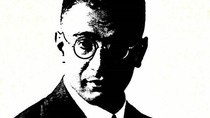.jpg)
Dr. Hans Wolff
Lifetime: 1899 - ? [year of death unknown]
Profession: Chemist
Employment at the plant: 1929-1938
Grounds for discrimination/persecution: Jewish [unclear whether according to creed or Nazi definition]
Fate: Self-resignation; further fate unknown
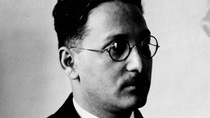.jpg)
Dr. Wolf Walter Wolff
Lifetime: 1891-1948
Profession: Chemist
Employment at the plant: 1928-1938
Grounds for discrimination/persecution: Jewish [by faith]
Fate: Termination of employment; emigration
Challenges in the search for traces
We have already explained why most of the people whose fates we have traced were highly skilled workers. In addition, there are no collected company records from the Nazi era that provide insights into how employees who were Jewish, or classified as such according to Nazi criteria, were treated at the I.G. Farben plants in Ludwigshafen and Oppau. While individual personnel files indicate that there must have been specific meetings on the subject, no records of these have survived. Any attempt to arrive at a comprehensive understanding must, therefore, be derived from the sum of the fragmentary, individual cases that have been preserved.
The search for traces starts with a list. This list was part of a sworn affidavit provided in 1947 by a senior member of the personnel department during the I.G. Farben Trials in Nuremberg. Based on the categories of the Nazi regime, it includes Jews, “half-Jews” and those married to Jews, and covers only highly-skilled workers. Whether comparable lists existed for other social groups is unclear, but this can be assumed to be the case. Companies would have needed such records during the 1930s, because the Nazi racial laws required employees to submit a declaration concerning their ancestry.
A further challenge is that, at the I.G. Farben plants in Ludwigshafen and Oppau, individuals with Jewish roots – alongside Jewish faith a decisive criterion for Nazi racial ideologists and the persecution apparatus – rarely stated their religious affiliation as “Jewish.” Most had been christened and had a Christian denomination noted in their personnel documents. As a result, personnel files and cards are only rarely helpful in identifying potential victims. Of the almost 6,000 personnel files and 10,000 personnel cards, only those of Dr. Berthold Stein, Hedwig Ebel, and Walter Wolff contain entries such as “Jewish” or “non-Aryan” [Nazi term]. Nevertheless, personnel files in particular remain essential in uncovering details that can only rarely be derived from the data framework of a personnel card, in the form of brief additional notes (as in the case of Hedwig Ebel).
The “Jewish Residents’ Directory” of Ludwigshafen from 1938 and 1939 was also consulted as an external source. Where occupational information stated that individuals had been employed at the I.G. Farben plants in Ludwigshafen or Oppau, this was cross-referenced. New names emerged only occasionally, and only for male employees who were married to female Jews. Moreover, employees also came from various locations in the surrounding area, such as Speyer, Mannheim, Heidelberg or Frankenthal, necessitating extending the search to these areas. Similar lists are also the only source of information in the case of “gypsies,” and were examined for Ludwigshafen. However, apart from Heinrich Birkenfelder, who was already known to us, we have so far been unable to identify any further Sinti or Roma.
The corporate archives provide only limited assistance in tracing the lives of those affected after they left the company. Some returned to BASF after the end of the war, when I.G. Farben was broken up by the military government and BASF was re-established in 1952. Others reestablished contact with the company after 1945 to claim financial compensation for unpaid benefits. Further research must, therefore, also take account of the reparation files.
The search for historical traces continues. The next step will be to focus more on the fates of employees who were persecuted for their political views.
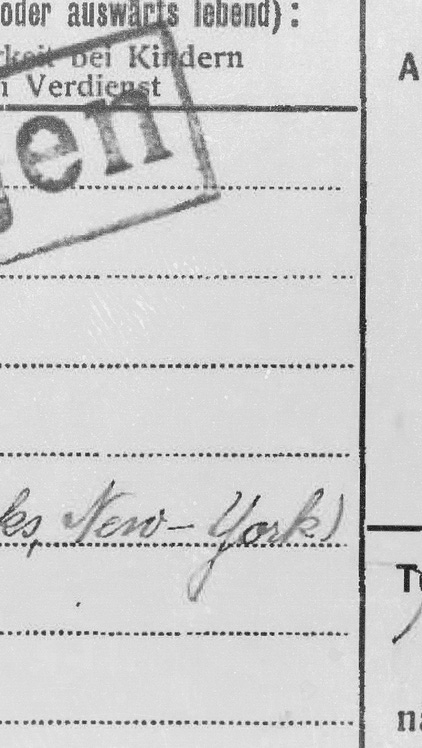
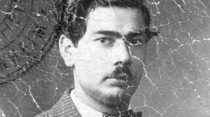
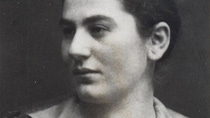


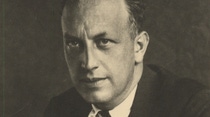
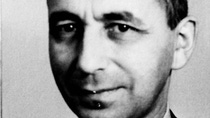
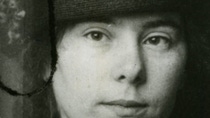_L%2021599-2_11%20Dr.%20Marie%20Regina%20Schuster.jpg)
